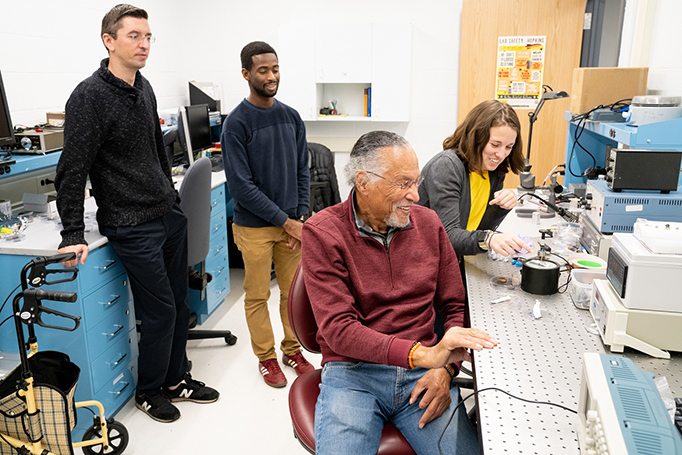Connecting entrepreneurs with government resources at CES
Guest blog by Derrick Brent, Deputy Under Secretary of Commerce for Intellectual Property and Deputy Director of the United States Patent and Trademark Office
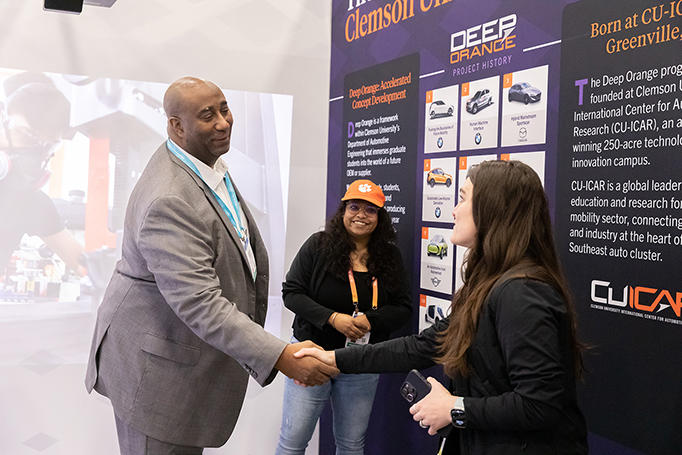
In early January, I attended CES for the first time ever. As a fan of gadgets, technology, and innovation, the experience was amazing. It was a chance to see today and a chance to see tomorrow. To paraphrase the song, the future’s so bright, I gotta wear AR shades!
Now I admit to being biased, but one of my favorite exhibits was the U.S. government pavilion in Eureka Park. Set amongst startups from countries around the world, the USPTO brought together partners from other agencies to show innovators the many resources available to help them along their journey. Also, the exhibit connected entrepreneurs and inventors to IP experts at USPTO headquarters through a kiosk with videoconferencing. The booth demonstrated the essence of the USPTO’s mission – reaching out and meeting innovators, wherever they are, to provide support and services, and stress the importance of intellectual property. From the traffic I saw during several visits, the USPTO and its partners were successful in fulfilling that mission.
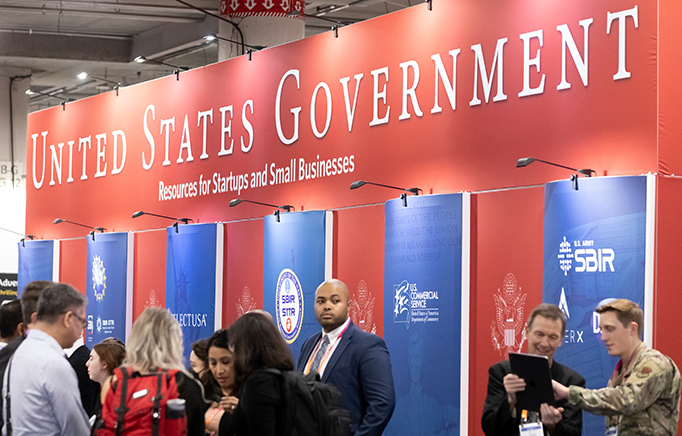
The USPTO began exhibiting at CES—with its ~100,000 attendees—in 2015. Since then, we have partnered with an increasing number of federal agencies to offer a one-stop shop for those interested in learning about U.S. government resources that benefit their businesses. The government pavilion that the USPTO spearheads is in an exhibition called Eureka Park, where about 1,000 startup businesses from around the world showcase their products and services. Many, if not all, have or need some form of IP protection. This year, we were joined by our friends at the National Science Foundation, International Trade Administration (SelectUSA), U.S. Commercial Service, Small Business Administration, Minority Business Development Agency, Defense Advance Research Projects Agency, and Army, Navy, and Air Force Small Business Innovation Research and Small Business Technology Transfer Programs. In addition to areas for each agency to chat with visitors, the booth included a live stage for startup presentations, an interactive anti-counterfeiting exhibit, a virtual kiosk connecting CES attendees with additional USPTO staff experts, and a meeting space for more in-depth discussions with on-site staff. Overall, more than 4,000 conference attendees visited the U.S. government pavilion to learn more about the resources the USPTO and other federal agencies provide businesses. And what a cool experience it was.
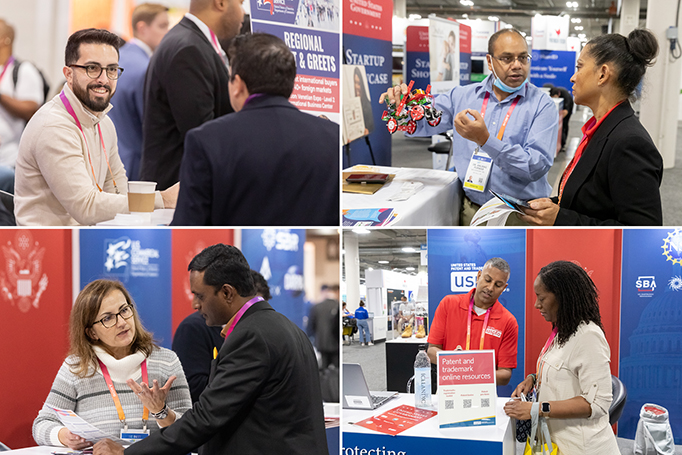
VCRs, satellite radio, and 3D printers are among the many history-making technologies that have been announced at CES throughout the 55 years of the technology trade show. This year, I had the chance to see some of the latest technology and innovation trends that will soon come across the desks of our patent and trademark examiners: artificial intelligence, quantum computing, synthetic biology, blockchain, precision medicine, virtual reality. I enjoyed the opportunity to engage with a number of startups, small business owners, and independent inventors. It was a privilege to hear their stories—both their successes and their challenges along the way—and share with them how the USPTO can best assist them in incentivizing and protecting their innovations.
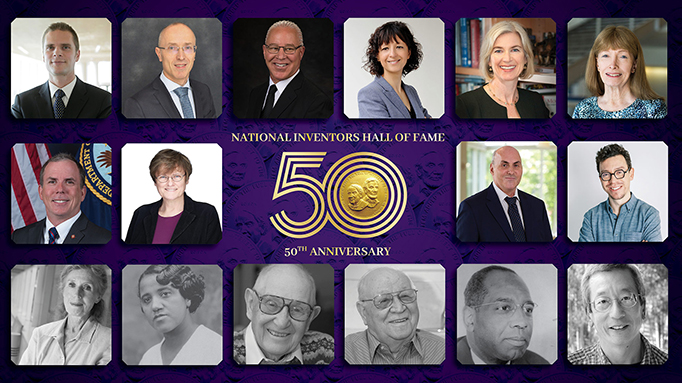
Another highlight of CES was the announcement of the sixteen inductees in the 50th class of National Inventors Hall of Fame® who we will honor later this year. With work spanning over a century, their landmark inventions are in fields ranging from construction to cosmetics to cybersecurity. From the inventors of the mRNA technology found in modern vaccines to the reCAPTCHA web security program and innovations in wheelchair technologies that have benefited countless individuals with disabilities, these innovation pioneers have saved lives with breakthroughs in cancer research, cardiac health, and vaccinations, won Nobel Prizes, and changed the way we understand the world.
CES is but one way we actively work to reach people where they are to assist their entrepreneurial ventures. We host monthly outreach and training events for all audiences, whether you’re new to the innovation system or a regular on the scene. These events feature stories from inspiring innovators, information about intellectual property in business, and tips on how to file for patent and/or trademark protection.
If you are an inventor or entrepreneur, the USPTO can help you wherever you are on your innovation journey. I encourage you to learn about the resources we offer, from patent and trademark basics, to protecting yourself against scams, to pro bono assistance, or connect with us at your closest USPTO regional office or at an upcoming outreach event. That includes our newly launched Intellectual Property Identifier Tool, which provides easily digestible IP information for those less familiar with IP. We are here to help and I look forward to meeting with many more of you in the future.
Posted at 08:14AM Feb 09, 2023 in USPTO | Comments[3]
Help our nation honor the innovators who have inspired you
Blog by Kathi Vidal, Under Secretary of Commerce for Intellectual Property and Director of the USPTO
James West has been recognized as an NMTI Laureate, IEEE Fellow, inductee to the National Inventors Hall of Fame, and recipient of the George R. Stibitz Trophy for his work on electret microphones, which are used in everyday items such as telephones, sound and music recording equipment, and hearing aids. A recipient of over 200 U.S. and foreign patents, West is also an advocate for science education, particularly among minority students. West is shown collaborating on a project with graduate students in his lab at Johns Hopkins University. (Photo by Jay Premack/USPTO)Innovation is a powerful tool that powers our economy. The products of American ingenuity can be found in nearly every home, office, lab, hospital, and in the hands or pockets of countless millions around the world. It’s what helps save lives, improve our standard of living, and send us breathtaking images from inside the human body to the far corners of our galaxy and beyond. We owe these historic, technological advancements to the dedication and efforts of scientists and inventors across our great nation.
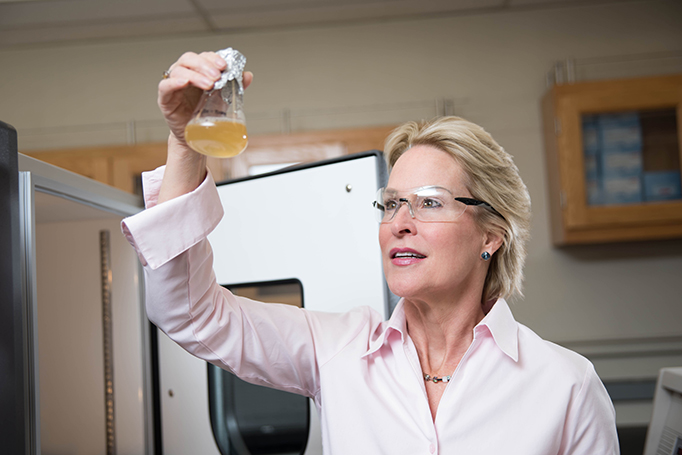
Frances Arnold became the first American female Nobel laureate in chemistry in 2018, for her work in harnessing the power of evolution to create new proteins that have useful properties not found in nature. A winner of the National Medal of Technology and Innovation, an inductee in the National Inventors Hall of Fame, and currently serving as co-chair of the President’s Council of Advisors on Science and Technology, she is passionate about mentoring the next generation of young scientists. (Photo courtesy of Caltech)
To recognize these top innovators, the USPTO is currently accepting nominations for the National Medal of Technology and Innovation (NMTI), our nation’s highest honor for technological achievement. The NMTI is a powerful symbol and incentive that encourages future generations to pursue scientific and technical careers, improve our world, and keep the United States at the forefront of global innovation.
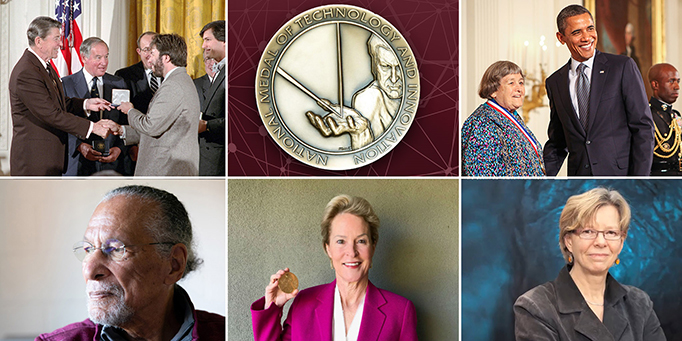
The President of the United States awards the NMTI to individuals, teams, and companies that have made lasting contributions to America’s competitiveness, standard of living, and quality of life through technological innovation. Since the medal’s inception in 1980, only 220 people have received this prestigious recognition. Past NMTI Laureates have included:
• Frances Arnold, whose work focuses on making fuel and chemicals from renewable sources
• Bob Metcalfe, an internet pioneer who proposed the idea of the Ethernet
• Cherry Murray, who invented an optical data storage system for telecommunication
• James West, co-inventor of the foil electret microphone, which is used in phones, computers, and hearing aids
You can learn more about these and other NMTI Laureates on the National Science & Technology Medals Foundation’s website.
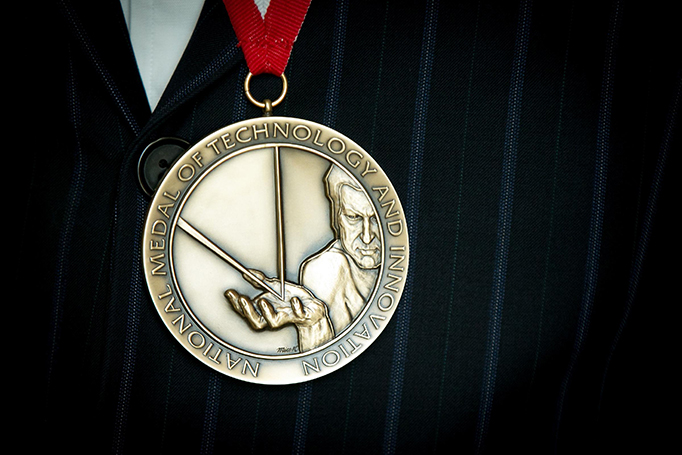
The NMTI is one way our country recognizes leaders in innovation and inspires others to become innovators themselves. Innovation is a powerful tool to vanquish inequities, generate economic growth, and solve world problems. The USPTO, along with every sector of the innovation community, must incentivize more Americans to innovate and discover America’s untapped potential. Our country will benefit significantly from these ideas, companies, and creative works.
We invite nominations for the NMTI that represent the diversity and ingenuity of innovators from across the United States. If you know of a person, team, or company that has changed the technological landscape through their discoveries and achievements, you can nominate them on the NMTI page of the USPTO website through May 26.
For more information on the NMTI and the award process, attend our webinar on March 16, sign up for the USPTO Awards newsletter, or contact us at nmti@uspto.gov.
Posted at 10:13AM Feb 07, 2023 in USPTO | Comments[1]
USPTO’s Trademark Public Advisory Committee: Where we’ve been and where we’re headed
Guest blog by David Cho, current chair of the USPTO’s Trademark Public Advisory Committee (TPAC) and Assistant Vice President Senior Legal Counsel, Trademarks & Copyrights of AT&T Services, Inc., and Susan Natland, immediate past chair of TPAC and co-chair of Knobbe Martens Trademark and Brand Protection Group
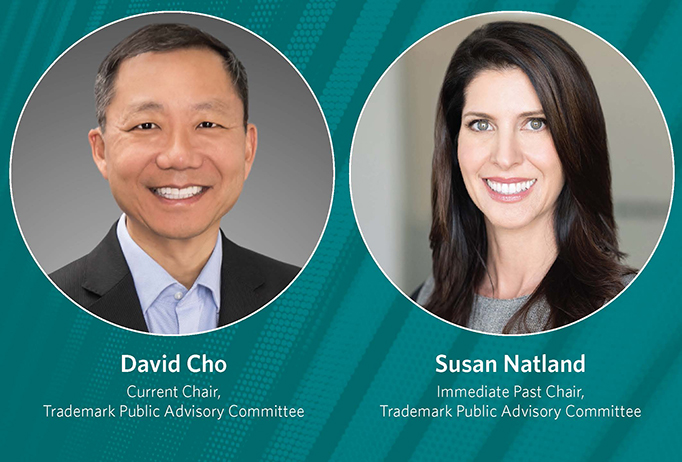
So, what are the key takeaways in the world of TPAC from 2022 and what can we expect in 2023?
Reduction in time to first examination: The USPTO has seen record trademark filings in recent years, creating a massive “inventory” of trademark applications waiting to be examined. In 2022, the time from the filing of a trademark application to its first substantive review by the USPTO – also known as “first action pendency” – rose to an average of more than eight months. To put this in context, first action pendency in 2019 and 2020 was between three and four months. By the start of 2021, the flood of new applications started driving up first action pendency. In support of the Trademark Office leadership, TPAC members provided valuable analysis and feedback as the USPTO implemented initiatives to meaningfully reduce pendency. These include measures such as hiring and training new examining attorneys and other personnel, streamlining workflows, changing procedures, as well as deploying IT solutions to increase examination efficiency. These efforts are continuing in 2023 with ongoing TPAC advice.
Addressing trademark scams and fraud on the USPTO: In 2022, TPAC provided timely advice to the USPTO as they continued to address the increasing issue of fraud on the USPTO, which affects the integrity of the trademark register and causes ripple effects across the trademark community. TPAC strongly supported the USPTO’s ongoing efforts to crack down on fraud in 2022, including: (i) alerting users to known scammers by posting a list of scammers on the USPTO website; (ii) working with law enforcement where appropriate and sanctioning filers that violate USPTO rules; (iii) securing federal registration of the USPTO’s own trademarks to assist in stopping USPTO impersonators; and (iv) implementing a new system requiring all trademark filers to verify their identities as a condition for filing electronic trademark forms. We expect to see continued and additional efforts in these areas in 2023.
Advancing equity across the brand community: In 2022, TPAC’s Diversity, Equity, Inclusion and Accessibility (DEIA) Task Force provided valuable guidance on and support for USPTO initiatives related to diversity and inclusion both within and outside the agency. TPAC’s commitment to focusing on increasing access and opportunities for all those with dreams of entrepreneurship led to elevating this task force to a subcommittee called Innovative Inclusion.
Combatting counterfeits: TPAC also strongly supported Director Vidal and the USPTO’s efforts to combat counterfeiting. In 2022, TPAC provided Director Vidal with ideas to address this scourge—some more traditional, such as increased and updated consumer (i.e., “buyer side”) education, and some more “outside the box.” TPAC believes that Director Vidal and the USPTO have done a great job articulating and providing visibility into the harm counterfeits bring to the U.S. economy, brand owners, consumers and communities. Keep an eye out for additional work in 2023 in this area as TPAC continues to provide input through a sub group experienced in fighting counterfeiting.
Highlighting the value of trademarks: A key part of TPAC’s focus is championing the value that trademarks bring to the U.S. economy. The USPTO’s March 2022 report on IP and the U.S. economy showed the enormous role that trademarks add to the financial health of U.S. IP-intensive industries, which accounted for $7.8 trillion in U.S. annual GDP. Of that total, $6.9 trillion—about one third of the entire U.S. GDP—comes from trademark-intensive industries. In addition, the report found that trademark-intensive industries supported more than 56 million U.S. jobs. The more we highlight the value of trademarks, the more the U.S. economy grows, consumers are protected, and creativity and innovation flourish.
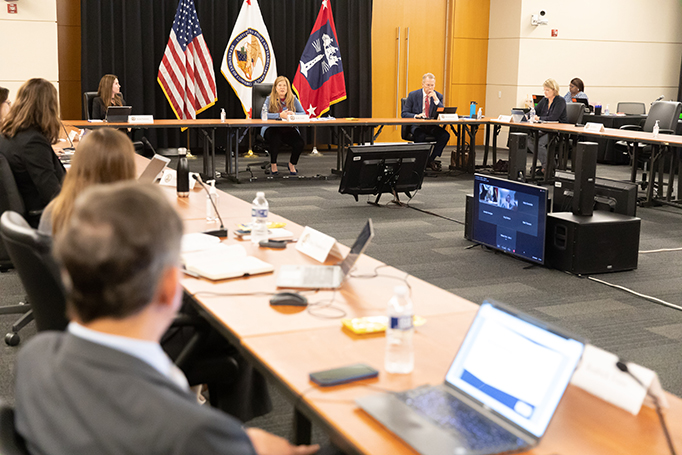
One way to highlight the value of trademarks it to honor them, and we look forward to further opportunities in 2023 and beyond to celebrate these critical legal protections that propel commerce and the U.S. economy. We also encourage you to check out USPTO’s Journeys of Innovation series which shares the stories of inspiring entrepreneurs whose trademarks serve as a critical way to communicate with their customers. These real-life stories truly exemplify the power of trademarks.
We have touched on a few highlights here, but this is just the tip of the iceberg! We encourage the trademark community to get involved in TPAC (more information can be found on the TPAC page of the USPTO website), to attend a TPAC public meeting, and to read more about the important work of our committee in our 2022 TPAC Annual Report.
Note: The current 2023 TPAC voting members are: David J. Cho (Chair), Adraea Brown (Vice Chair), Jomarie Fredericks, Tracy Deutmeyer, Dana Brown Northcott, Rodrick Enns, Deborah Gerhardt, Donna Griffiths, and Amy Hsiao. Each person is appointed by the Secretary of Commerce to serve on TPAC for a three-year term. For more information about the TPAC, its members and its work, visit the TPAC page of the USPTO website.
Posted at 08:33AM Feb 02, 2023 in USPTO | Comments[7]
The Unleashing American Innovators Act: Promoting inclusive innovation under the new law
Blog by Kathi Vidal, Under Secretary of Commerce for Intellectual Property and Director of the USPTO
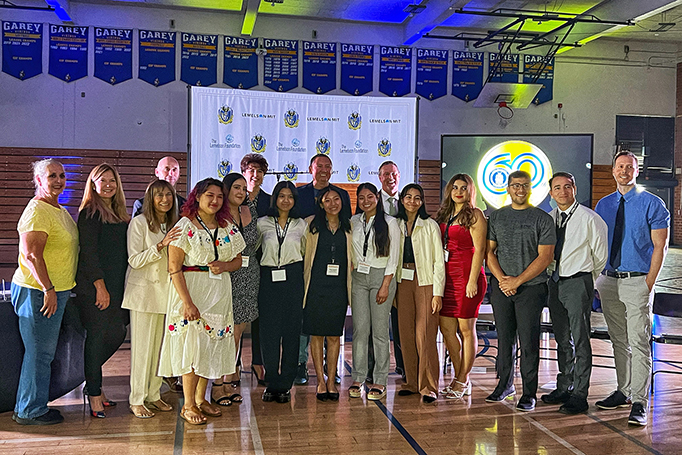
Since I took the helm of the USPTO in April of 2022, the USPTO has been working feverishly to unleash America’s potential. We immediately expanded our pro bono efforts, focused on outreach and impact, and are working on ways to better support those new to the innovation ecosystem. We are guided by the vision that by quadrupling the number of U.S. inventors, we can expand our economy, and GDP, by $1 trillion. We can create more and better jobs in more communities and give every American the opportunity, tools, and support to pursue the American dream.
With the support of Congress and President Biden, and the Senator Patrick Leahy-led Unleashing American Innovators Act of 2022, signed into law as part of the Consolidated Appropriations Act, 2023 on December 29, now is the moment to make lasting, sustainable change.
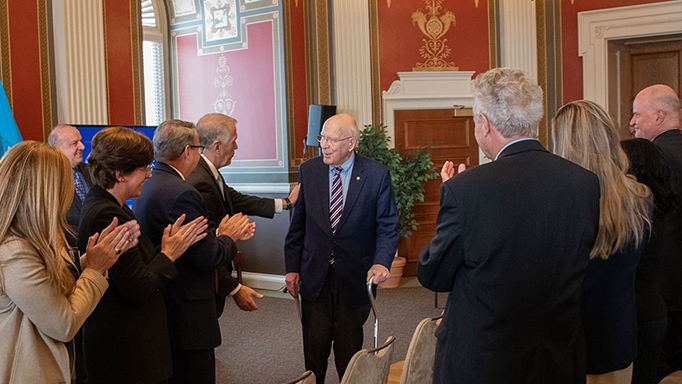
First, we must reach people where they are to bring them into the innovation ecosystem. The USPTO has been focused on outreach and impact, including the impact of the USPTO throughout the country. After hosting a two-day summit at our Rocky Mountain Regional Office in Denver, Colorado this past summer, we have been working on a plan to increase our geographic reach, and have been awaiting passage of the Unleashing American Innovators Act of 2022. Now that the bill is law, we are positioned to move forward quickly.
The bill supports USPTO’s expanded outreach efforts by requiring the USPTO to establish, within three years, a Southeast Regional Office, serving the States of Virginia, North Carolina, South Carolina, Georgia, Florida, Tennessee, Alabama, Mississippi, Louisiana, and Arkansas. The bill also requires the USPTO to report out within two years on whether additional offices are necessary to further increase participation in the patent system by individuals who have historically been underrepresented in patent filings.
In addition to satellite offices, the bill calls for the USPTO to establish community outreach offices within five years, including one in the New England region and in areas of the country where minority business owners are not as prevalent to help increase the number of underrepresented inventors and entrepreneurs in those areas.
Second, we must reduce the innovation ecosystem’s barriers to entry. As a fee-funded agency, we continually need to assess and adjust fees to ensure we are recovering costs to produce the most robust and reliable IP protection possible. This work is critical to the U.S. economy in securing investment, innovation and jobs in the U.S., and to advance an IP system that is accessible to all. Although small- and micro-entity fees help keep fees lower for those who are under-resourced, more needed to be done. Accordingly, the bill increased small entity discounts from 50 percent to 60 percent and micro entity discounts from 75 percent to 80 percent (view the updated USPTO fee schedule on our website).
While fees can pose a barrier to new entrants to our innovation economy, the fees charged by the USPTO are often dwarfed by the price of legal counsel. Recognizing that some applicants will need to proceed pro se (without legal counsel), the USPTO launched a Patent Pro Se Assistance Program to provide those applicants additional assistance on how to obtain a patent.
We have also been working since my first day to expand the USPTO’s Patent Pro Bono Program for independent inventors and small businesses. When we reach out and meet people where they are with pro bono legal services, we serve a broader group of constituents. Our data shows while the number of women inventors named on patents remains around 12-13%, the percentage of pro bono participants benefitting from our services is 41% women, 30% African American or black, 14% Hispanic American, 5.6% Asian American or Native Pacific Islander, and 1.5% Native American. In other words, pro bono counsel is providing critical assistance to underrepresented inventors and serving as the bridge to our innovation economy.
The bill supports our efforts to further build our pro bono programs, calling for us to complete a study within the next year on our pro bono programs and work with our Pro Bono Advisory Council, the regional program operators, and IP law associations across the country to implement meaningful changes that will help us expand efforts to provide free assistance to inventors and entrepreneurs. It also calls for the expansion of income eligibility to allow more innovators to benefit from these programs, putting the threshold at 400 percent of the federal poverty line as an individual’s gross household income. We are thrilled to continue this critical work.
Third, we must provide those new to the innovation ecosystem the education and support they need to be successful.
The USPTO offers extensive free services and courses to educate the public, including those new to the IP ecosystem, on ways in which IP protection can help them bring their ideas to reality and build successful businesses. A few examples of these resources:
• Our 8-part Path to a Patent series, next running from January 12 – March 16 , covers everything from IP basics, to patent searching, to what you'll need to draft and submit your patent application. Similarly, our 8-part Trademark Basics Boot Camp series provides a comprehensive overview of trademarks and the federal trademark registration process, including walking participants through the application filing process and concluding with a live question-and-answer period with a USPTO trademark expert. The next series kicks off January 10 and runs through February 28.
• Our Stakeholder Application Readiness Training (StART) provides training tailored to educate pro se applicants about the patent filing process and provides resources to submit a nonprovisional patent application.
• Our law school clinic program, which now includes over 60 participating clinics and provides legal services free to the public, including to inventors, entrepreneurs, and small businesses.
• Throughout the year, our Office of Innovation Outreach provides free events to inspire, educate, and empower underserved and under-resourced communities of innovators. The events feature successful independent inventors, entrepreneurs, and small business owners who share their personal stories of how they are using their patents and/or registered trademarks to reach their full potential, as well as subject matter experts who share information about funding/financial literacy, technical assistance, and mentoring/network programs. Working with partners from other federal agencies, organizations, and universities, the USPTO connects the public to valuable and timely information and resources at these events year-round.
• Our resources for kids, students, educators, and parents connect the K-12 community with engaging, fun activities (including inventor trading cards!) that bring out the innovator in all students and teach them about the importance of safeguarding ideas and businesses through intellectual property protection. Lots more to come on that in 2023, so stay tuned!
• Our inventor and entrepreneur resources provide inventors and entrepreneurs information to assist them at any stage of protecting their inventions and/or brand (e.g., education about the different types of IP, how to apply for a patent or trademark registration, assistance available after an application has been filed, etc.).
• Working across government and streamlining resources, our Council for Inclusive Innovation (CI²), of which I serve as Vice Chair and Secretary of Commerce Gina Raimondo as Chair, the National Advisory Council for Innovation and Entrepreneurship (NACIE) led by our sister agency the Economic Development Administration (EDA), and other collaboration opportunities with the military and veterans, the Minority Business Development Agency, Tribal Nations and communities, and more, work to eliminate barriers to the innovation system and meet people where they are with the resources they need to increase American innovation and entrepreneurship. Additionally, our recently-launched Women’s Entrepreneurship (WE) initiative serves to empower more women leaders and advance the conversation around challenges and opportunities for women-owned businesses.
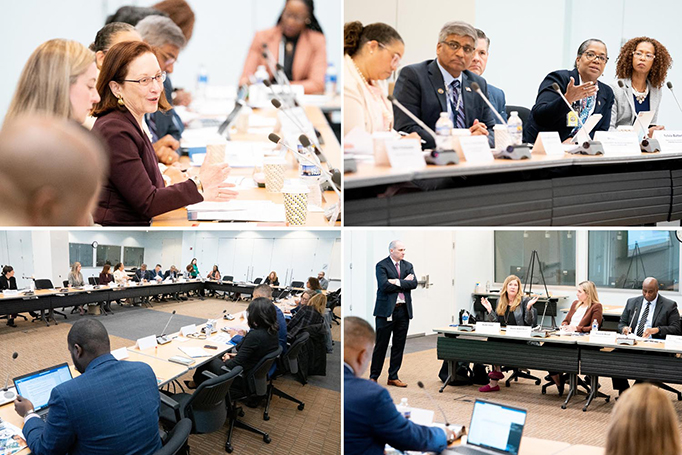
I have also spoken with individual inventors and small companies across the country to learn about their pain points. As a result, the USPTO is working on an expedited filing program to provide under-resourced first-time filers with expedited examination at no additional charge. We plan to announce the program later this month. As part of that program, applicants will be required to take certain key training to help ensure their success.
We are grateful that the bill provides us with the flexibility to explore more ways to assist first-time filers, including additional pilot programs to help them navigate the application process. Notably, the bill bolsters our work to support first-time applicants by establishing a pilot pre-prosecution assessment program, providing assistance to first-time prospective patent applicants in assessing the strengths and weaknesses of their potential patent applications.
I want to close by thanking and congratulating Senator Patrick Leahy and all those who worked hard to push the bill across the finish line. The bill complements our work to support small inventors, start-ups and those traditionally underrepresented in the innovation ecosystem. With the lower fees, additional outreach and support, and the expanded ability to obtain pro bono counsel, we are positioned to make meaningful progress in 2023 by measurably lowering the barriers for those entering the innovation ecosystem. As Secretary of Commerce Gina Raimondo remarked, “[a]s we successfully implement the programs” outlined in the bill, “the Biden Administration will continue showing that an economy that invests in the American people is an economy that will create shared prosperity for all.”
Posted at 08:57AM Jan 10, 2023 in USPTO | Comments[2]
Top three helpful tips for filing patent applications as you move to DOCX format
Blog by Kathi Vidal, Under Secretary of Commerce for Intellectual Property and Director of the USPTO; Andrew Faile, Acting Commissioner for Patents; and Jamie Holcombe, Chief Information Officer
Update: The USPTO has delayed the effective date of the non-DOCX surcharge fee to January 17, 2024, to give applicants more time to adjust to filing their patent applications in DOCX format, and has extended the backup PDF option until further notice. This blog has been updated to reflect these changes.
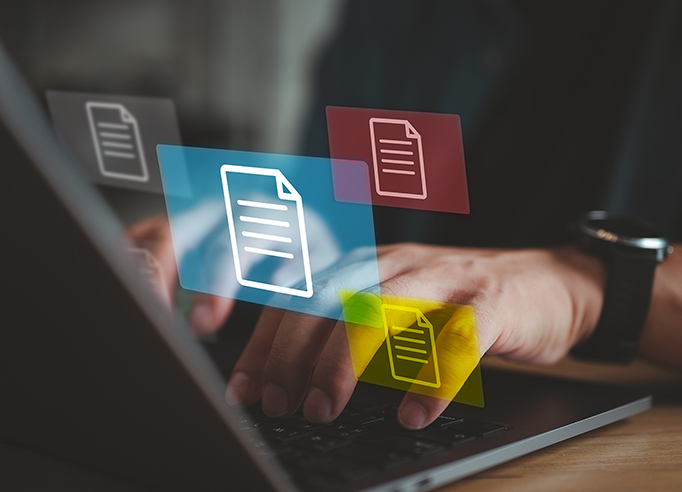
Thank you to all who have already moved to DOCX. Your feedback has helped up improve our processes to ensure DOCX works for all. It has helped up troubleshoot issues and provide guidance to stakeholders to ensure they do not make common mistakes that can be easily avoided. Though we encourage all applicants to move to DOCX as soon as they are able, for those needing some additional time, the USPTO, starting June 30, 2023, will allow applicants to file patent applications outside of DOCX upon payment of a fee (which will be discounted for small and micro entities). To help ease the transition to DOCX, we’ve also made several resources available on the DOCX page of the USPTO website.
To ensure a successful transition, we also wanted to share our top three helpful tips to ease the transition to DOCX:
1. Consider submitting an optional applicant-generated backup PDF, also known as the auxiliary PDF, with your application
We heard your ideas about filing an auxiliary PDF with your DOCX formatted application. In response to that suggestion, you can submit an applicant-generated auxiliary PDF of your application along with your DOCX version. While this opportunity was originally designed to be available until December 31, 2022, we have extended the program for six months through June 30, 2023. (Find out more in our Federal Register notice) Our hope is that this will provide you the confidence you need in filing with DOCX format, while providing peace of mind that the process is working as intended. There are currently no fees associated with submitting this auxiliary PDF, and it is completely optional.
2. Use the Auxiliary PDF (if necessary)
We’ve heard from some of you that you are concerned the validated DOCX version or the USPTO-generated PDF version may contain a discrepancy. Though we saw discrepancies in earlier versions of the tool, we considered your feedback and have updated the tool accordingly. It is now at a very advanced stage (version 18). We have not been seeing requests to rely on the auxiliary PDF discussed above. That said, if you have specific concerns, there are a few steps you can take.
The Electronic Business Center (EBC) is a great place to start. Please notify the EBC of any concerns with your electronic file as soon as possible. A trained representative can work with you to address your concern. You can reach the EBC at 866–217–9197 (toll-free), 571–272–4100, or ebc@uspto.gov 6 a.m. to midnight ET, Monday through Friday.
In addition to contacting EBC, there are other ways you can correct your application, such as:
• Making a correction to your application that is supported by the validated DOCX, by filing a petition under 37 CFR 1.181
• Making a correction to your application that is supported by an auxiliary PDF, by filing a petition under 37 CFR 1.182
• Making a correction to your application by relying on the incorporation by reference provisions of 37 CFR 1.57(b) with a proper priority benefit claim
You can find detailed information about the different ways to correct DOCX formatted applications in our DOCX FAQs..
We have also received questions about the role that auxiliary PDFs play if any discrepancies arise in USPTO-provided priority documents. Regardless of whether an application is filed in DOCX or PDF format, the USPTO provides a certified copy of the application-as-filed for use as a priority document using documents submitted on the application filing date and stored in the electronic application file, together with a certification sheet. If the USPTO makes any errors in providing a certified copy of an application, upon notification, the USPTO creates and sends a corrected certified copy of the application. This would be the same process should a discrepancy arise in the DOCX conversion to a USPTO-generated PDF. If an applicant files a patent application in DOCX format with an auxiliary PDF, the auxiliary PDF can be used as evidence in correcting the certified copy at the USPTO. If an applicant provides an auxiliary PDF of the application along with the DOCX version of the application at the time of filing, a copy of the auxiliary PDF is also included with the certified copy.
3. Use Patent Center training mode to test your DOCX-formatted application
Use the Patent Center training mode, which is an interactive simulation that allows you to practice filing using DOCX documents without officially submitting your patent application. You can use the training mode to familiarize yourself with other features in the new, modernized Patent Center, including a feedback document, which flags any errors in your application before you submit it. When you use training mode, you’ll have access to the same features and tools of the live Patent Center—except your application is not saved, data entered will not be submitted, and applications will not be associated with your customer number.
We’re working hard to make your transition to filing patent applications in DOCX as seamless as possible. To date, we’ve trained more than 20,000 people in our DOCX training sessions, gathered extensive feedback through our IdeaScale page, and addressed a litany of questions. In response to your feedback, we have also made office actions available in DOCX and XML formats and are now accepting DOCX for drawings, in addition to the specification, claims, and abstract, for certain applications.
And we are never done listening. We welcome your feedback and will continue to incorporate your suggestions wherever possible. Contact us at the Electronic Business Center at 866–217–9197 (toll-free), 571–272–4100, or ebc@uspto.gov 6 a.m. to midnight ET, Monday through Friday. Thank you for your help and support as we continue modernizing our systems for the benefit of all.
Posted at 08:59AM Dec 19, 2022 in USPTO | Comments[8]
Recognizing life-saving COVID-19 innovations
Blog by Kathi Vidal, Under Secretary of Commerce for Intellectual Property and Director of the USPTO
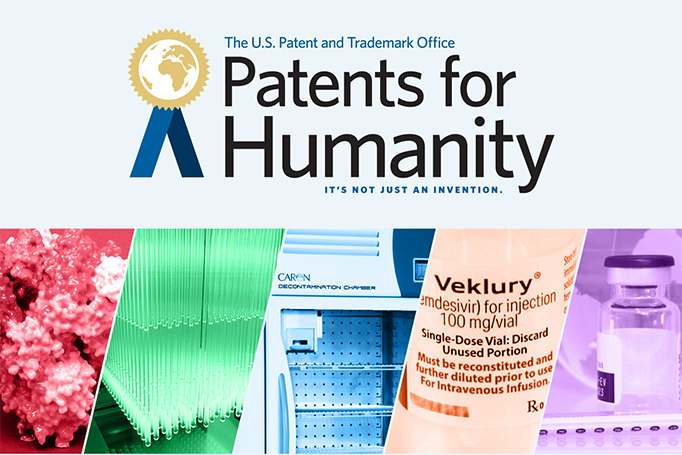
This year’s awards recognize innovators with a pending U.S. patent application or issued U.S. patent focused on inventions that track, prevent, diagnose, or treat COVID-19. The winning innovations, which receive acceleration certificates to expedite select proceedings at the USPTO, went through two rounds of judging by experts, based on two scoring criteria: the effectiveness of the technology to address COVID-19 and the technology’s ultimate impact.
The winners of the Patents for Humanity: COVID-19 category awards are:
National Institute of Allergy and Infectious Diseases (NIAID) (Rockville, MD)
NIAID, Scripps Research Institute, and Dartmouth College invented stabilized coronavirus spike proteins, which were essential to the development of the COVID-19 vaccines used today. The vaccines that incorporate these stabilized spike proteins have been instrumental in combatting the COVID-19 pandemic.
The breakthrough came when NIAID scientists and their collaborators engineered coronavirus spike proteins that enables the human immune system to mount effective responses against coronaviruses. This work cleared the path for the rapid development of the COVID-19 vaccines.
NIAID employed nonexclusive licensing to maximize use of the invention by as many vaccine developers as possible with the goal of accelerating vaccine development and global access. To facilitate this access, NIAID also partnered with the World Health Organization to promote the availability of the invention through its COVID-19 Technology Access Pool (C-TAP).
Regeneron Pharmaceuticals (Tarrytown, NY)
Regeneron Pharmaceuticals developed a novel therapy to help treat and prevent COVID-19. The medicine, known as REGEN-COV® in the United States, consisted of a combination of two monoclonal antibodies (casirivimab and imdevimab), and was the first to receive Emergency Use Authorization (EUA) from the U.S. Food and Drug Administration for the treatment of COVID-19. Anticipating that viruses can change over time, a key feature of Regeneron’s invention is how the two antibodies work to independently block the virus’s ability to infect healthy cells, which helped keep the therapeutic effective against multiple variants of SARS-CoV-2. Regeneron scientists developed the therapy for clinical trial use in five months, and received the EUA in ten months, moving from lab to patient in record time.
During the height of the pandemic, Regeneron made this treatment available to as many patients as possible in the United States. The U.S. Department of Defense and the Biomedical Advanced Research and Development Authority (BARDA), part of the Administration for Strategic Preparedness and Response at the U.S. Department of Health and Human Services, supported pre-clinical and late-stage clinical development, procurement, and distribution of REGEN-COV® in the United States at no cost to patients. In addition, Regeneron collaborated with global pharmaceutical company Roche to increase access to REGEN-COV® in the United States and globally.
University of South Florida (USF) (Tampa, FL)
USF developed 3D-printed nasal swabs used when nasal swabs used in covid tests were in short supply at the height of the pandemic. The USF Health Department of Radiology team and their colleagues from the USF Health Department of Internal Medicine Infectious Diseases worked with Northwell Health, New York's leading healthcare provider, to create the initial design and prototype for a 3D-printed nasal swab.
Completing a multisite national clinical trial out of Tampa General Hospital in two weeks, a process that typically takes years, the team produced a swab that cost between $0.25-$0.46 each, depending on an institution's print and lab resources, compared to an average of $1 each for commercially produced swabs.
The USF team collaborated with Formlabs to optimize the design and maximize the number of swabs that could be printed. In addition, USF allowed hospitals to use the swab design for free during the first year of production to help slow the spread of the virus. Since the first batches of 3D-printed swabs were processed, over 100 million of these USF Health–invented devices have been used in more than 60 countries.
Caron Products (Marietta, OH)
Caron Products developed a decontamination chamber that was used to disinfect personal protective equipment when it was in short supply during the height of the pandemic. When social distancing and proper hygiene were embraced globally, face masks and other Personal Protection Devices (PPDs) were in short supply. As a result, surgeries and other medical procedures were being cancelled due to the lack of availability of proper protective equipment for front-line nurses, doctors, and their patients.
Caron Products halted all other engineering research and new-product development projects to focus on developing an innovative means of decontaminating PPDs for reuse. The Caron team developed a decontamination chamber that uses vaporized hydrogen peroxide (H2O2) technology to quickly kill pathogens on both porous and non-porous surfaces, including PPDs. The development and commercialization of this technology helped relieve some of the strain on the supply chain for PPDs.
Gilead Sciences Inc. (Foster City, CA)
Gilead developed a widely effective antiviral medication used to treat COVID-19 known as remdesivir, one of the earliest therapeutics for COVID-19. Administered via injection, remdesivir works by blocking SARS-CoV-2 from reproducing in the body, and has been shown in clinical trials to help those with COVID-19 recover faster and reduce disease progression. Gilead has expanded access to remdesivir throughout the world by working with global generic pharmaceutical manufacturers. These arrangements allow the companies to manufacture generic remdesivir for distribution in 127 countries, the majority of which are low-income and lower middle-income countries. These agreements have been royalty-free, reflecting Gilead’s commitment to global equity and ensuring as many patients as possible had access to remdesivir at the height of the pandemic.
The ground-breaking technologies and solutions of the Patents for Humanity: COVID-19 category winners continue to make a difference in the lives of millions of people around the world facing the challenges of the pandemic. I also want to thank Senators Patrick Leahy (D-VT) and Charles Grassley (R-IA), and Representatives Hakeem Jeffries (D-NY) and Veronica Spartz (R-IN) for their leadership in sponsoring the Patents for Humanity Act, legislation that recently passed both chambers and codifies our Patents for Humanity program to incentivize more innovations for the benefit of all society.
We hope these success stories serve as inspiration for more individuals to harness innovation for human progress, and in doing so, change the world for the better.
Posted at 02:18PM Dec 15, 2022 in USPTO | Comments[1]
Increasing representation of Native Americans in STEM and innovation
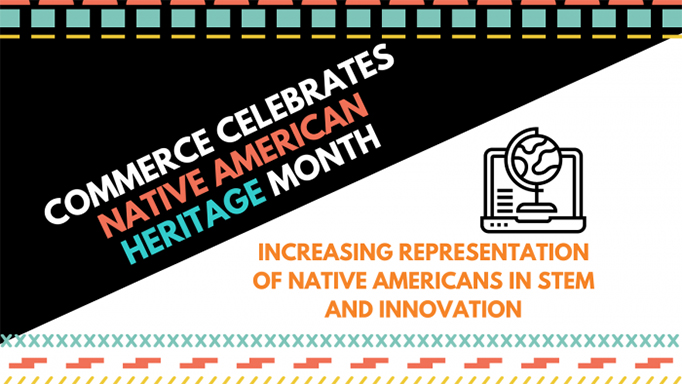
Joint blog by the USPTO and the Economic Development Administration
This month, the U.S. Department of Commerce is celebrating Native American innovators and entrepreneurs. Agencies across the Department of Commerce, including the U.S. Patent and Trademark Office (USPTO) and Economic Development Administration (EDA), offer a number of tools and resources to support all inventors, innovators, and entrepreneurs, including those in underrepresented communities like Native Americans.
Tara Astigarraga, Master Inventor at IBM
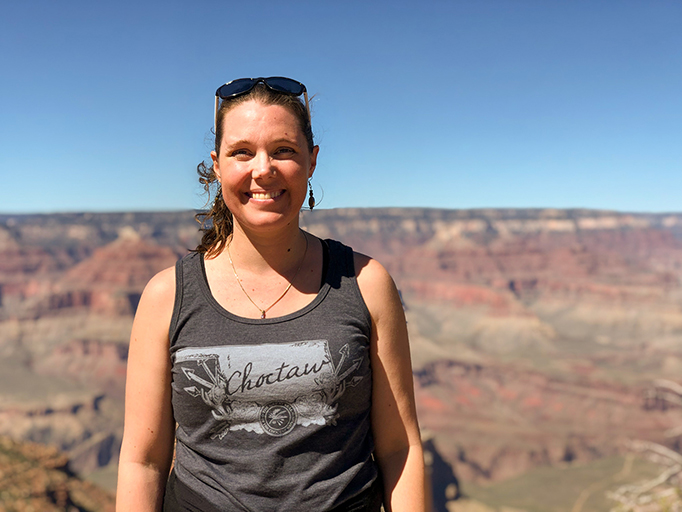
With the help of IBM mentors and her first patent in 2008, Tara Astigarraga, who is a member of the Choctaw Nation of Oklahoma, helps younger women and men from underrepresented backgrounds see the possibilities of a career in science, technology, engineering, and mathematics (STEM). Born and raised in Arizona and part Native American through her father, today she is an IBM Master Inventor named on more than 80 patents—for a variety of innovative storage, networking, security, and blockchain solutions.
Speaking about the importance of mentorship, Astigarraga stated “I had a really great mentor when I first joined [IBM] from the Native American community. She was the head of our diversity group at the time. Her name's Michele Morningstar... And she pulled me immediately into the diversity group there and got me involved with all the other folks across IBM.”
Astigarraga is passionate about increasing the representation of Native American communities and other underrepresented groups in STEM fields. “When people talk about activities in STEM or how to build pipelines and get people involved,” Tara says, “they typically talk about the Black and Hispanic communities and even women. But Native American communities hardly ever get brought up because when you round that data, we get rounded to zero and we don't even get included in those conversations.”
She also speaks frankly about her struggle with a challenge all too common to young people, especially those from backgrounds traditionally underrepresented in STEM: impostor syndrome. Working with young students, especially girls, young women, and members of other traditionally underrepresented groups like Native Americans, allows Tara to be an example of a successful engineer they can see and relate to. Read more about Tara Astigarraga in the USPTO’s Journeys of Innovation story. And learn more about the USPTO’s inclusive innovation efforts, resources that support all inventors and entrepreneurs, and the Women’s Entrepreneurship initiative that just launched with the Department of Commerce.
Developing the Ecosystem to Support Future Innovators
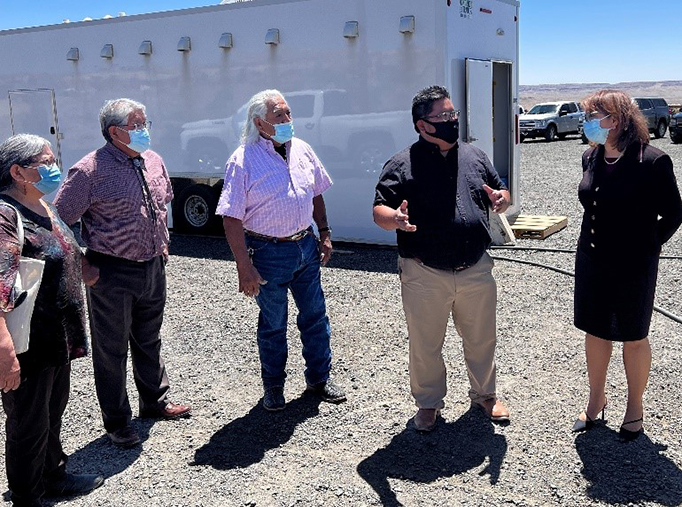
Through Economic Development Administration (EDA) programs, the Department of Commerce supports the inventors and entrepreneurs that follow in Astigarraga’s footsteps by working with Tribal leaders to develop a robust commercial ecosystem that cultivates and advances talent within America’s Indigenous communities.
With President Biden’s American Rescue Plan (ARPA), EDA recently completed distribution of $100 million in funding through the Indigenous Communities program, a major investment initiative created to support Tribal governments and related organizations as they design and execute economic development projects to build economies for the future, including the creation of opportunities for Native American innovators seeking seek good-paying jobs in STEM fields.
For instance, with EDA backing, the Standing Rock Renewable Energy Authority is planning, evaluating, and designing the Anpetu Wi Wind Farm. This project will help diversify the local economy and increase energy independence for this Tribal community. Meanwhile, in New Mexico, the Pueblo of Picuris is constructing the Picuris Vocational Training Center, building the skills of the local workforce to help secure quality job opportunities. These projects, and dozens like them, are supporting Tribes and Alaskan Native Villages as they establish a trajectory for economic success that accelerates the achievements of new generations of Native American innovators.
Expanding opportunity and creating an economy that works for all Americans is central to the Department of Commerce’s mission and strategic plan. The USPTO and EDA are proud to join all Commerce bureaus in celebrating the Native American community and recognizing their significant contributions to our nation’s economy, competitiveness, and growth.
Posted at 01:03PM Nov 23, 2022 in USPTO |
See yourself at the USPTO: Find a student program for you
Blog by Kathi Vidal, Under Secretary of Commerce for Intellectual Property and Director of the USPTO
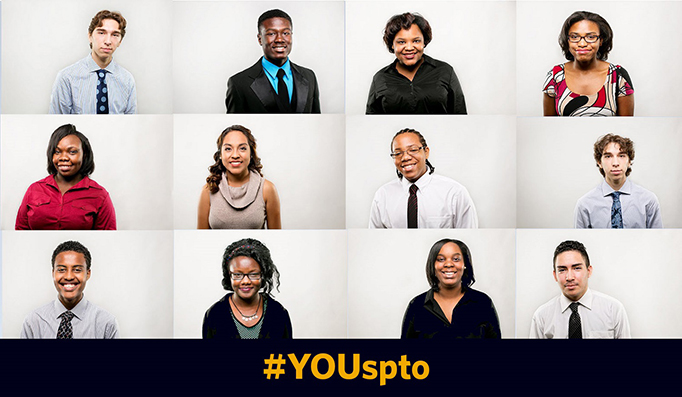
Students in the USPTO’s IP skills work-based learning program conducted with the Urban Alliance (Photos by the USPTO)
“Being able to see so many people in a position that I hope to eventually reach in terms of public service has been inspiring to me.”
“I have really enjoyed the freedom and trust given to me while externing at the USPTO. Everyone treats you as they would any other employee in the office, with respect and high expectations.”
“Don’t be afraid to go outside of your comfort zone. The USPTO does a lot of cool things besides issuing patents and registering trademarks. Take advantage and explore different areas that might not first come to mind when you think of intellectual property.”
The future of our country hinges on the dreams, aspirations, and persistence of our youth. To help them achieve success, we provide high school, college, and law school students with a range of unique opportunities to leverage their innate skills while building new ones for continued growth. It is my hope that students will participate in our programs and then be ambassadors in their communities to let other students know that intellectual property (IP) is a gateway to future success.
Our student programs are unique and include:
• Paid internships
• Opportunities for high school, undergraduate, graduate, and law students to strengthen their IP knowledge and develop skills to help advance their careers
• Flexible time range: Over the summer or during the school year, full time or part time
• Flexible location: Virtual and in-person work opportunities available at our headquarters in Alexandria, Virginia, or one of our regional offices in Dallas, Denver, Detroit, and San Jose
One thing all our programs have in common is that students work on real hands-on projects, gain valuable skills for their future careers, and make meaningful contributions to our agency. In fact, this past August, we hosted a “Pitch Day” where intern groups shared their recommendations with me and other agency leaders – from social media campaigns to expanded outreach methods. We were blown away by their creative ideas! As a result, we have begun implementing many of their ideas (which include the great hashtag #YOUspto).
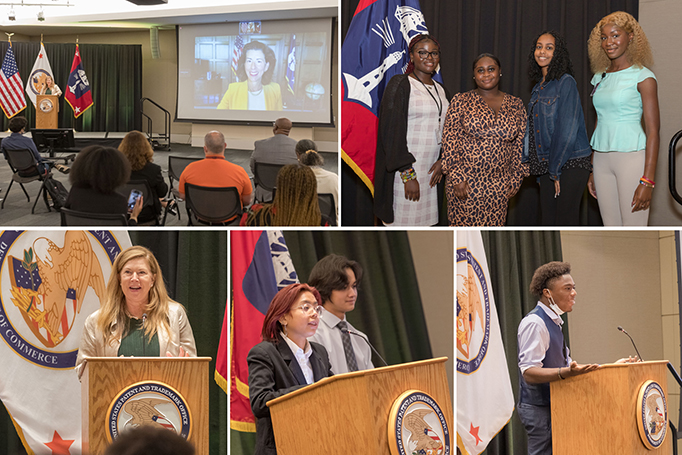
IP skills work-based learning program
Our year-round paid work-based learning (WBL) experience for high school students is conducted with the Urban Alliance and provides students with a living wage, exposure to career opportunities in federal service, mentoring, and invention and entrepreneurship education. Over the summer, I had the chance to meet with these outstanding high school students, where they shared their ideas with me on how to expand inclusive innovation among their peers, communities, and across the country. They also presented their capstone presentations, summarizing their summer projects and skills they developed. We were even joined by a special guest, Secretary of Commerce Gina Raimondo, a champion of work-based learning programs. These students impressed both me and the Secretary so much that we’re in discussions to expand the WBL program to other agencies throughout the Department of Commerce. More to come!
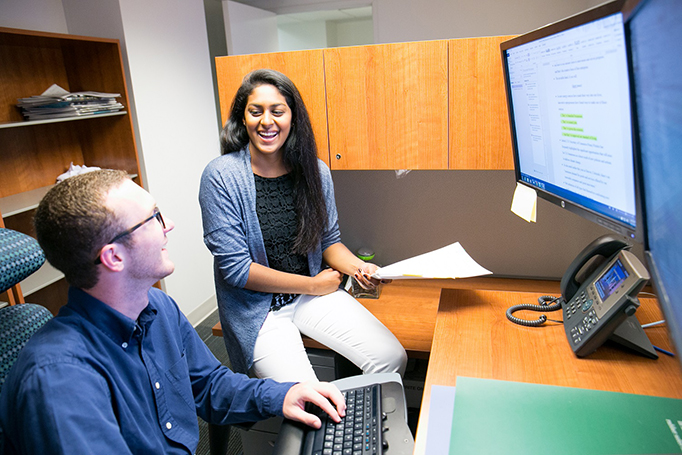
Externs at the USPTO work in all business units across the USPTO, from finance, to communications, to international affairs, and more. (Photo by Jay Premack/USPTO)
Extern program
Our volunteer USPTO extern program provides talented high school and college students with unique opportunities to gain valuable skills and professional experience. Typically, the USPTO hires over 40 externs annually. Through this program, externs work on real projects that make an impact, while learning about the agency and its mission, networking with peers and our employees, and hearing directly from leadership about their own career paths. The program also offers invaluable early exposure to the world of IP and a chance to jumpstart a unique career in protecting American innovation.
Although we run the extern program year-round, the summer season is when we have the majority of student volunteers. The program duration ranges from a minimum 12 weeks to a maximum of one year, and many of the positions offer the option to be in-person or virtual.
USPTO internship program
The USPTO internship program provides students who are enrolled in colleges, trade schools, and other qualifying institutions with paid opportunities to work and explore federal careers while completing their education. We encourage students from all different backgrounds to apply! Assignments may include research, analysis, statistics, coordination of briefing books, assistance in developing detailed reports, attending and reporting out on hearings, legislative markup sessions, and more. Interns are paid at the GS-4 level and are offered the opportunity to gain professional work experience, develop soft skills, gain exposure to intellectual property, and earn experience working at the USPTO.
Innovation internship program
As I announced recently, we have launched a new innovation internship program to provide hands-on job training to community college and university students from diverse backgrounds, fields, and locations. These paid internships offer third year college students with an opportunity to earn an annual GS-4 salary and can last up to two years. It is my sincere hope that other federal agencies will look to this program as a model as we create a culture of inclusiveness in innovation. I can’t wait to see what our first cohort of interns accomplishes.
Future Leaders in Public Service Internship Program
Operated by the Partnership for Public Service, the Future Leaders in Public Service Internship Program places young talent at the USPTO, as well as other Department of Commerce bureaus and the Department of Transportation. With only 7% of the full-time federal workforce under the age of 30, the program works to identify, recruit, and retain the next generation of public servants. The paid internship program develops a diverse pool of young talent for these agencies. Undergraduate, graduate, and law students can apply. Participants receive a $4,000 stipend for the summer from the Partnership for Public Service.
Connect with us!
Each year, our recruiters speak with college students across the country during the fall and the spring to recruit the best and brightest to join America’s Innovation Agency at our headquarters in Alexandria, Virginia, or in one of our four regional offices in Dallas, Denver, Detroit, and San Jose. View our student outreach schedule to see when we’ll be near you! We can speak to you not only about our student opportunities while you’re in school, but also full-time opportunities after you graduate. Application deadlines vary based on the opportunity. Any other questions? Contact us at recruitment@uspto.gov.
From real-world experience to real-world application, our student programs have the future in mind. Like I said to our interns this summer, my advice is to take what they learn from their time at the USPTO and build on it, continue to challenge themselves, and even when faced with obstacles, know that there are resources and mentors who can help them. I am thrilled that they have chosen the USPTO to advance their careers, and I hope more students join us on their innovation journeys.
Posted at 08:31AM Nov 09, 2022 in USPTO | Comments[1]
Jumpstart your career with LEAP!
Blog by Kathi Vidal, Under Secretary of Commerce for Intellectual Property and Director of the USPTO
Over two years ago, the USPTO introduced the Legal Experience and Advancement Program (LEAP) to provide the next generation of patent practitioners with hands-on experience before the Patent Trial and Appeal Board (PTAB). LEAP is a career development program for patent agents or attorneys with three or fewer substantive oral arguments (not including pro bono) in a federal tribunal. Since the program launched, 135 practitioners have participated in LEAP arguments and more than 140 others have taken LEAP training.
LEAP stands out from other legal mentoring programs. It provides newer practitioners with experience arguing in both real and mock cases before PTAB judges. The mock arguments are in front of actual judge panels and are followed by one-on-one feedback from the judges. LEAP also provides informative webinars and numerous training opportunities, including the opportunity to speak with experienced practitioners, to assist participants to develop their advocacy skills and style. LEAP practitioners learn how to better advocate in ex parte appeals and post grant proceedings under the America Invents Act (AIA), such as inter partes reviews, on behalf of patent applicants, patent owners, and AIA petitioners.
I’m proud to say that I have been involved with LEAP since its inception, as I helped support its development while still in private practice. Now, as Director, it’s even more clear to me what a meaningful program LEAP is for everyone involved, from newer practitioners all the way up through LEAP sponsors, clients, and the whole intellectual property (IP) bar. I’m proud to see the growth of this program and its meaningful impact in the legal community. By promoting opportunity and advancement for all, it helps secure the future of our legal profession.
One LEAP participant said it best: “LEAP helped me become a more well-rounded patent practitioner. Not only did LEAP help me develop my oral advocacy skills, it provided additional perspective about the PTAB and the ex parte appeals process that I have carried through to other areas of my practice. For example, LEAP helped me understand important things to emphasize during prosecution that could later be helpful in an ex parte appeal. And I have applied what I learned about oral advocacy to other areas of my practice, from examiner interviews to interactions with clients and colleagues.”
The future success of the program depends on you!
The USPTO encourages all members of the IP community – lawyers, law firms, clients, etc. – to support and participate in LEAP. The LEAP program, and the experiences gained in it, can benefit the whole IP bar and its clients. The USPTO also asks law firms and law firm leaders to consider serving as sponsors in LEAP and think about including the LEAP program as part of your regular training.
To request a LEAP practitioner argue in a PTAB case, you simply need to fill out the form on our website and email it to ptabhearings@uspto.gov at least five days before the hearing. Learn more about the program by reading insightful testimonials from the sponsors and participants themselves on our website.
LEAP is an active and ever-growing program and we are continually looking for ways to expand opportunities for participants. We will be hosting a new “LEAP to Chambers” event on November 9 to allow interested LEAP applicants to visit USPTO headquarters in Alexandria, Virginia for a judge-guided tour of the hearing facilities and to learn about advocacy tips from PTAB judges. Although this event is at capacity, we have plans for future sessions in the Detroit, Denver, Dallas, and San Jose regional offices, as well as virtually. Subscribe to USPTO email updates to hear about these as soon as they are announced.
For more information or to offer suggestions on ways to improve the program, please contact us at leap@uspto.gov.
Posted at 12:56PM Nov 01, 2022 in USPTO | Comments[2]
Hispanic inventors and entrepreneurs bring new technologies to market
Joint blog by the U.S. Patent and Trademark Office and the Economic Development Administration
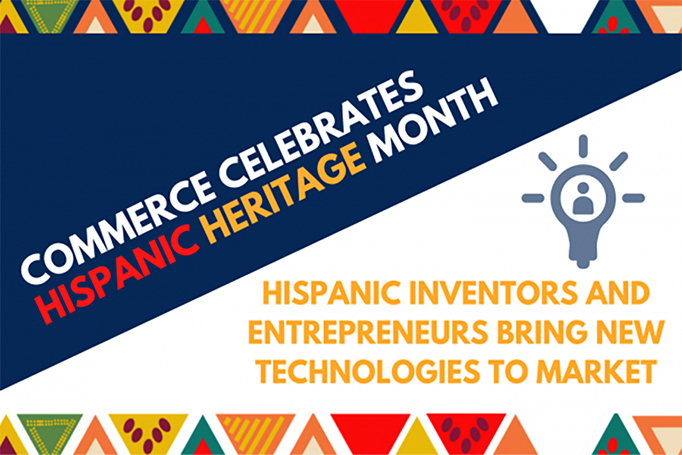
This month, the U.S. Department of Commerce is celebrating Hispanic Heritage Month and Hispanic communities. We pay tribute to the numerous Hispanic entrepreneurs and innovators that help fulfill the promise of America for all. Here are three of their stories.
Using Artificial Intelligence to Develop Greener Chemicals
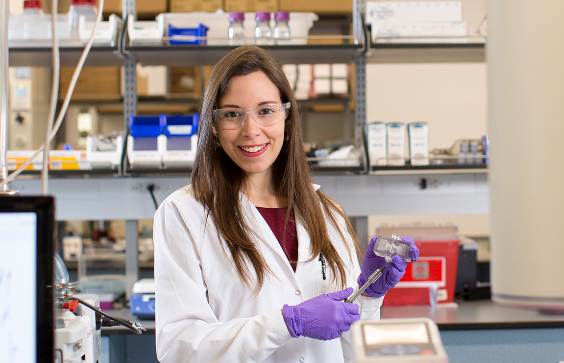
Chemical engineer Dr. Daniela Blanco was looking for ways to make nylon production more sustainable when she discovered that her innovative use of artificial intelligence technology might be able to help scientists across the entire chemical industry. Born in Venezuela, Blanco earned her PhD in the United States, where she founded her startup company Sunthetics. The company uses artificial intelligence to help others develop greener chemicals. By developing machine learning platforms that leverage very small data sets, the company enables scientists throughout the chemical industry to make new chemicals, medicine, and materials, up to 15 times faster. Read more in the USPTO’s Journeys of Innovation story on Daniela Blanco.
“Sustainability from now on should be profitable. Sustainability should be something that we take as a given. That we are already building new chemicals, new materials, everything — in the most possible, sustainable way.” I have always thought there is great strength in knowing who you are. I am beyond proud of my roots, my culture, and my values. I embrace where I come from, and I am grateful for the way it shaped me to define where I am going.”
Innovation to Fight Chronic Respiratory Diseases
Dr. Maria Artunduaga is a Colombian-born physician-scientist, inventor, and patent holder. After losing her grandmother to chronic obstructive pulmonary disease (COPD), she decided to leave her career in plastic surgery and founded Samay Health. The startup focused on enhancing the quality of life for people living with COPD through connected health and machine learning. Her solution—a device named Sylvee, after her grandmother—is a prototype modeled after continuous glucose monitoring sensors. The device attaches to the patient’s chest and injects sound through the thoracic cavity, listens back to it, and captures changes in resonance. She's raised $3.2M in non-dilutive and venture capital to bring Sylvee to market. Hear from Artunduaga and other successful Hispanic innovators about their creative journeys at the USPTO’s upcoming Hispanic Innovation and Entrepreneurship Program on October 12.

“Entrepreneurship ensures the U.S. can win on the global stage, but Latinos are still underrepresented in business and technology. Advancing policies that expand access to research funding and highlighting inventors of color will enable a necessary shift in the industry. Protecting our intellectual property (IP) has enabled Samay to be highly differentiated and investable. We have four granted U.S. patents, and ten additional more pending in the U.S. and in eight other countries. In retrospect, I think being an immigrant has strengthened my drive to build a strong IP portfolio because I know it will help my business compete long-term. I tell people, look at me, I'm not an engineer, but taught myself how to do this. If I did it, anyone can.”
Catalyzing Entrepreneurship
For Briselda Hernandez, the motivation to support innovators and entrepreneurs grew out of a passion for community service. After graduating from the University of San Diego, she served as an AmeriCorps VISTA member attached to the Los Angeles Unified School District Community Partnership Program. There she helped improve the organizational and financial capacity of the district’s parent engagement program. Nine years later, she’s now the executive-director of Minot, North Dakota’s Souris Basin Planning Council (SBPC), an Economic Development Administration (EDA)-designated Economic Development District. SBPC is managed by a coalition of public and private sector entities and charged with delivering capacity building and technical assistance to catalyze entrepreneurship and stimulate innovation in North-Central North Dakota.

SBPC recently launched a Business Accelerator Fund that is providing startup and gap financing to emerging businesses and has resulted in the creation of 79 new jobs since 2020. Last year, the fund also helped establish the Start Up Minot Academy, providing networking and education for local entrepreneurs. As Hernandez explains, it’s the ability to deliver these types of rapid results and impactful programs that is the most rewarding aspect of working in economic development.
"I am intrigued by the multi-faceted, fast-paced, and creative nature of the field,” said Hernandez. This profession gives you the opportunity to be a catalyst for change by collaborating with a wide-range of stakeholders including individuals, governments, nonprofits, and private organizations.”
Expanding opportunity and creating an economy that works for all Americans is central to the Department of Commerce’s mission and strategic plan. The USPTO and EDA are proud to join all Commerce bureaus in celebrating the Hispanic community and recognizing their significant contributions to our nation’s economy, competitiveness, and growth.
Learn more about Hispanic inventors and entrepreneurs at the 2022 Hispanic Innovation and Entrepreneurship Program on Oct 12. In addition, visit the USPTO’s inventor and entrepreneur resources page to learn more about protecting your intellectual property. Additional information on EDA programs that can assist entrepreneurs is available on the EDA website.
Posted at 11:58AM Oct 11, 2022 in USPTO | Comments[2]
Go for Real: An innovative USPTO partnership helping young consumers avoid dangerous fakes
Blog by Kathi Vidal, Under Secretary of Commerce for Intellectual Property and Director of the USPTO
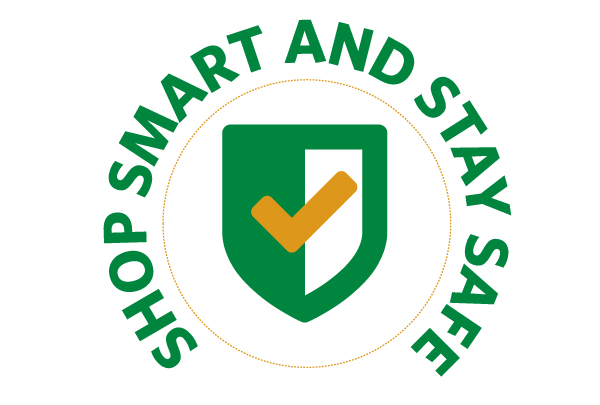
As America’s Innovation Agency, the USPTO is working to protect brands, from those owned by individuals and start-ups to the world’s most well-known brands. The USPTO is working to change the narrative around purchasing counterfeit products and informing consumers about the dangers and consequences of purchasing counterfeit goods.
Counterfeit products, such as faulty electronics and fake medicines, cause serious injuries and death. Fake electronics and consumer items can cause fires or include dangerous chemicals that can seep into skin. The U.S. Drug Enforcement Administration, in its One Pill Can Kill campaign, notes that criminal drug networks are flooding the U.S. market with mass-produced fake pills and falsely marketing them on social media and e-commerce platforms as legitimate prescription pills.
Buying fake products funnels money from U.S. jobs and companies into the hands of criminal enterprises, supporting human trafficking, the gun and drug trades, and other crimes. We estimate that the global sale of counterfeit goods hovers around $2 trillion per year—more than the GDP of 216 countries, including Italy, Canada, and Spain. In fiscal year 2021, the U.S. Customs and Border Protection and U.S. Immigration and Customs Enforcement–Homeland Security investigation seized over 27,000 shipments containing counterfeit goods, with a total value (had they been genuine) of more than $3.3 billion.
Here at the USPTO, we are working across government and with legitimate businesses who invest significantly in their products and brands. We are joined in this important work by our colleagues at the U.S. Food and Drug Administration, U.S. Customs and Border Protection, the International Trade Administration (ITA), the U.S. Copyright Office, and private sector leaders such as the International Trademark Association (INTA), the National Inventors Hall of Fame (NIHF), innovation film organization Cinequest, and several others. Together, we must work to curb the physical and economic harms caused by faulty and dangerous counterfeit products, while freezing out the criminal enterprises they support.
Education on the dangers of counterfeit goods must start early. That’s why, since 2019, the USPTO has partnered with the National Crime Prevention Council (NCPC) and McGruff the Crime Dog® on the Go For RealTM campaign. This innovative, multi-format public awareness initiative informs tweens, teens, and their caregivers and educators on how to spot counterfeit products and avoid the risk of harm they pose.
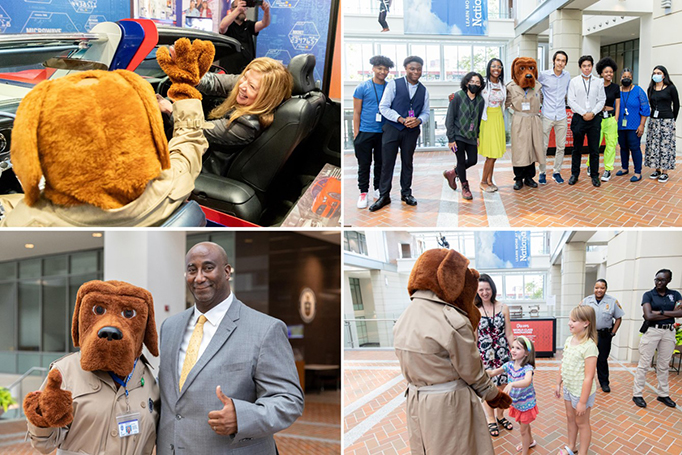
On August 11, the Go For Real campaign debuted its latest public service announcement (PSA), “The Real McGruff”, featuring a 3-D animated McGruff the Crime Dog and his nephew, Scruff. This new PSA will be seen by millions in both English and Spanish on television, social media, and other distribution channels. In its debut week alone, the PSA aired approximately 300 times, including on major networks and on Spanish-language channels in Los Angeles, Phoenix, Denver, Boston, and more.
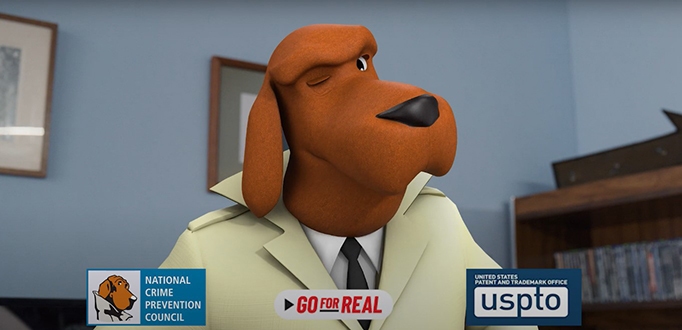
The USPTO is excited to team up with this modernized McGruff to take a bite out this 21st century crime that puts the health and safety of millions at risks, jeopardizes American businesses and the millions of workers they employ, and threatens American competitiveness worldwide. Protecting legitimate brands is vital to ensuring a safe and stable economy, and we encourage all consumers to “Go For Real.”
You can view the new PSA here, and check out the rest of the Go For Real campaign’s engaging and educational content. My personal favorites include:
• The award-winning “You’re Smart. Buy Smart” PSA, debuted in November 2021. It has been aired on television channels around the country more than 50,000 times.
• The digital “Dupe Detector Kit,” an interactive e-book that challenges readers to test their “Dupe Detector” skills. It provides tips on how to tell a real product from a fake one, trivia to reinforce learning, and the opportunity to earn points that can be put toward collectible badges on the Go For Real campaign webpage.
• The #GoForReal Challenge, an interactive quiz that will test your knowledge on the surprising—and sometimes astonishing—materials that are used in fake products.
Young people are getting the message. A survey conducted last year by Ipsos, an international market research and consulting firm, found that teens exposed to the Go For Real campaign demonstrated a greater awareness of the dangers of counterfeits, felt more confident in spotting fake goods, and were more likely to make an effort to buy genuine products.
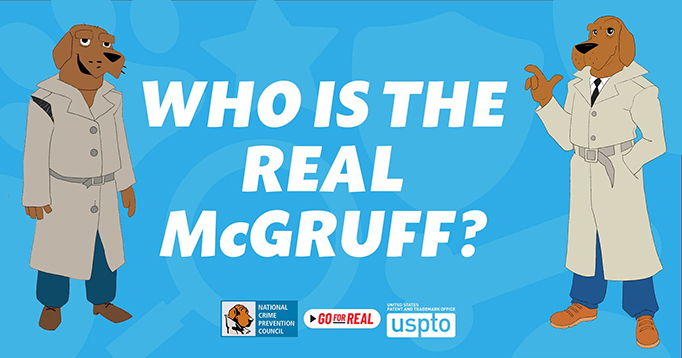
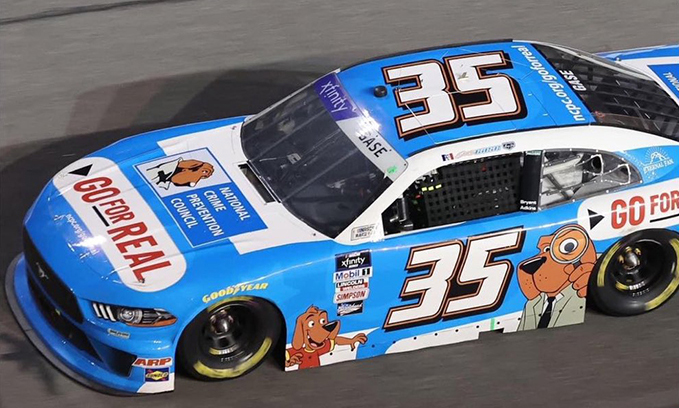
Go for Real logo on Joey Gase's #35 car at the WAWA 250 in Daytona Beach, Florida (photo courtesy of the National Crime Prevention Council)
Go For Real is also making waves internationally: Campaigns have already been launched in Mexico and Thailand. The latest iteration is in Mexico, where the Mexican Institute of Industrial Property (IMPI) has developed the “Elige el Original” (“choose the original”) campaign. It features a new mascot designed to better appeal to Mexican children and teens: an Axolotl, or a Mexican salamander. And there are future plans to expand into other global markets.
By working together to reduce the scourge of fakes and raising awareness about the dangers and costs of purchasing counterfeits, it’s our hope that we can make a real difference in this effort. And we always welcome additional collaborators! Whether you are a brand or leading a start-up, or just someone who wants to make a difference, please join us and get involved by emailing enforcement@uspto.gov. And if you think you've spotted a counterfeit, report it to help others shop smart and stay safe. Let’s all pledge to “Go For Real.TM”
Posted at 11:15AM Sep 19, 2022 in USPTO | Comments[1]
Duty of disclosure and duty of reasonable inquiry promote robust and reliable patents, drive competition and economic growth, and bring life-saving drugs to the American people
Blog by Kathi Vidal, Under Secretary of Commerce for Intellectual Property and Director of the USPTO
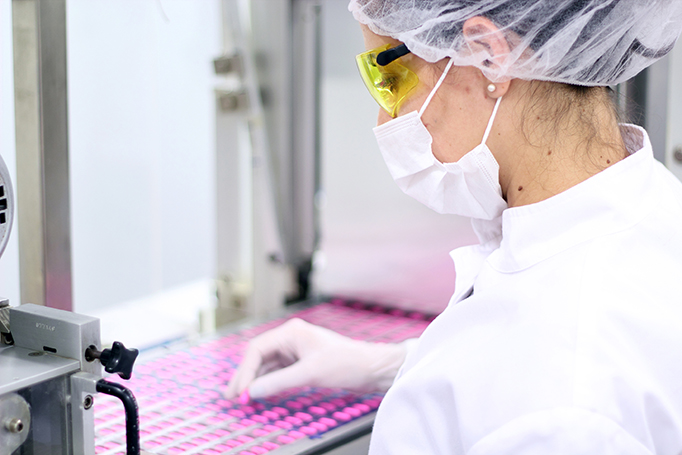
For patents to play this critical role, they must be robust and reliable. Robust and reliable patents incentivize and protect breakthrough innovation, but they also ensure our system as a whole does not unnecessarily delay getting generic and more affordable versions of those drugs into the hands of Americans who need them.
President Biden recognized this need in the July 9, 2021, Executive Order on Promoting Competition in the American Economy (EO). The EO required the Food and Drug Administration (FDA) to identify any concerns about the patent system being used to unjustifiably delay generic drug and biosimilar competition beyond that reasonably contemplated by applicable law. On September 10, 2021, we received a letter from Acting FDA Commissioner Woodcock in which the FDA suggested further engagement between the FDA and USPTO “to facilitate greater awareness of our complementary work and introduce efficiency in our respective workstreams.”
I recently sent a response to the FDA's letter to FDA Commissioner Dr. Robert Califf. In it, I described many of the initiatives we’re working on to strengthen our patent system for all technologies, in addition to the work the USPTO is doing with the FDA directly.
One of those initiatives relates to ensuring that the USPTO has the key information our examiners need when deciding whether to grant patent rights. The USPTO and the American people rely on inventors, applicants, and parties abiding by their “duty of disclosure” and “duty of reasonable inquiry,” including their ongoing duty to provide consistent statements about drugs to the USPTO and the FDA. This duty applies during examination of patent applications, including continuation applications, and after issuance during any post-grant examination or proceeding to review the issued patent. Adherence to these duties helps our patent examiners and administrative patent judges within the Patent Trial and Appeal Board effectively and efficiently determine whether an invention—for instance, a drug product—is patentable by providing them with key relevant information. Failure to abide by these duties is not only a disservice to the American public, it is sanctionable.
To reinforce the importance of these duties, today we announced information in a federal register notice (FRN) on the “duty of reasonable inquiry” and “duty of disclosure” owed to the USPTO and American public.
The FRN also addresses a letter from Senators Leahy and Tillis expressing their belief that improving patent quality will increase competition and drive economic growth. The letter requested that we take steps to ensure that drugmakers disclose relevant statements they have made to other agencies, such as the FDA, when seeking patent protection for their pharmaceutical products at the USPTO. The letter expressed concern that, “[f]or example, inconsistent statements submitted to the Food and Drug Administration (FDA) to secure approval of a product—asserting that the product is the same as a prior product that is already on the market—can then be directly contradicted by statements made to the PTO to secure a patent on the product.”
In addition to today’s FRN, we are considering additional measures to ensure issued patents are robust and reliable. Visit our USPTO-FDA Collaboration Initiatives page for more information on our efforts in the pharmaceutical space. As always, we welcome your feedback at drugpricing@uspto.gov and invite you to join us at an upcoming public event. You can also sign up for email updates to get the latest on news from the USPTO and other upcoming events and connect with me through the Engage with the Director webpage.
Posted at 05:24AM Jul 28, 2022 in USPTO |
Secretary of Commerce Gina Raimondo and the USPTO’s Council for Inclusive Innovation expand innovation to promote jobs and U.S. prosperity
Blog by Kathi Vidal, Under Secretary of Commerce for Intellectual Property and Director of the USPTO

The key to unlocking the potential of every American, creating jobs, and promoting economic prosperity is expanding access to the innovation ecosystem in every corner of our country. We must not only promote and protect more innovation, we must tap into communities traditionally underrepresented in the innovation ecosystem. If we address these disparities, we could quadruple the number of American inventors, and increase the GDP per capita by as much as 4%, or by about $1 trillion. This is a national imperative.
That’s why the USPTO’s Council for Inclusive Innovation (CI2), which Secretary of Commerce Gina Raimondo and I Chair and Vice Chair respectively, has been hard at work on new initiatives to bolster participation in innovation, including invention, entrepreneurship and creativity. CI2 council members—which include leaders in industry, academia, government and non-profit organizations—worked with CI2 working group members to develop initiatives to improve our innovation economy and strengthen American competitiveness.
In addition to launching our newly rolled out inclusive innovation page, which offers those new to the innovation ecosystem resources and services to encourage and support their participation, we are launching a first set of initiatives to encourage, empower, and support the innovators of tomorrow.
These new initiatives include:
Innovation internship program
As a child of a career military family who grew up with limited resources, and as one of only three women in my entire electrical engineering class in college in the 1980s, I recognize the importance of providing those without traditional paths into our innovation ecosystem equal and equitable opportunities. To teach our youth the value of innovation and protecting innovation with intellectual property, and to encourage a more inclusive pipeline of talent, the USPTO is establishing paid internships at our agency to provide hands-on job training to community college and university students.
If you are or know of an interested student, please see our newly-posted announcement calling for candidates and apply by August 16. I hope to see you around the halls of the USPTO!
First-time filer expedited examination petition
The USPTO receives approximately 40,000 patent applications per year that name at least one inventor who is a first-time filer. For some first-time micro entity filers, speeding up the time to secure a patent could accelerate their ability to bring their ideas to impact – to start companies, secure investment and create jobs.
To support their journeys, we are announcing a new fast-track program that will provide expedited examination and early indication of patentability for first-time micro entity filers. The fast-track program will include additional support for filings in the program including training as a prerequisite to participation in the program. Look for our federal register notice (FRN) on this program soon, which we expect will launch in early fall. After the program launches, even those already in the system may be qualified to participate.
This program supplements the USPTO’s other expedited examination programs including those supporting COVID, cancer immunotherapy, and green technology. For a full listing of options, visit the initiatives page of the USPTO website.
Expansion of free legal services
By expanding access to free (or “pro bono”) legal services, we can assist more under-resourced innovators protect their ideas and bring them to market. The USPTO is expanding both its Law School Clinic Certification Program as well as its support of regional patent pro bono programs.
The USPTO’s Law School Clinic Certification Program includes over 60 participating law school clinics that provide legal services at no charge to inventors and small business owners. Expanding our program to more law schools and students means increasing opportunities for more innovators to receive important pro bono services to help bring their ideas to reality. It also provides for more opportunities for more students to explore the world of intellectual property and to be able to contribute more meaningfully upon graduation.
We are excited to welcome four new law schools this year as participants in the patent and/or trademark law school clinic programs: George Mason University, Case Western University, Wake Forest University, and Brigham Young University. We are grateful for their participation and their willingness to serve our nation’s innovators through their important work.
If you’re a law school interested in joining this innovative program, please email LawSchoolInformation@uspto.gov.
The USPTO also supports 21 pro bono regions across the country as part of the USPTO’s Patent Pro Bono Program. I have met with a number of participants from those regions as I visited with various communities across our country. We are working with participating regional patent pro bono programs on plans to expand their work, including by infusing more funding into their programs, so they can help even more innovators. We find that when we reach people where they are, we support a wider swath of Americans including more veterans, those having a lower socio-economic status, those outside of technology hubs, and those who have traditionally not had access to the innovation ecosystem.
Whereas approximately 13% of named inventors on U.S. patents are women, 41% of Patent Pro Bono Program applicants who responded to a survey in 2021 identified as women. In addition, 30% identified as African American, 14% as Hispanic, 5.6% as Asian American or Pacific Islander and 1.5% as Native American.
Community outreach campaign
The USPTO employs more than 9,000 patent examiners and trademark examining attorneys across the country. These are intellectual property (IP) experts whose work propels innovation forward and protects inventions and brands. Our employees have the experience and knowledge to help communities meaningfully pursue invention, entrepreneurship and creativity and to protect their ideas, brands and creations.
Later this year, the USPTO will pilot a volunteer program that will leverage the USPTO’s nationwide workforce as a powerful tool for educating local communities on the importance of IP, with the goal of increasing IP literacy and participation in the innovation ecosystem across our nation’s full population. Volunteer employees – or, as I like to think of them, USPTO IP champions – will engage with new audiences on the importance of protecting ideas and brands to help foster new businesses and economic activity. They will supplement the great work done through our East Coast regional coordinator and our four regional offices.
These are just a few of the initiatives we are launching as part of our CI2 mission to expand innovation. We look forward to developing and announcing more. I welcome your feedback on these and other ideas, along with potential ways to collaborate to help advance our mission. Please connect with me at our Engage with the Director page on the USPTO website. Further, we invite you to email CI2@uspto.gov if you’d like more information on CI2 or to share additional ideas.
As Secretary Raimondo has said, “America’s diversity is a competitive advantage for our economy, but only if we give everyone an opportunity to fulfill their potential and fully participate.” We must encourage Americans who have not traditionally participated in our innovation ecosystem to pursue STEM innovation education and careers, to patent their ideas, trademark their brands, seek investments to grow their enterprises, and engage in emerging new sectors of the economy that need their unique insights and perspectives.
I am excited to be on this journey with you.
Posted at 04:38AM Jul 27, 2022 in USPTO | Comments[1]
The search for lost X-patents
Guest blog by Adam Bisno, USPTO Historian
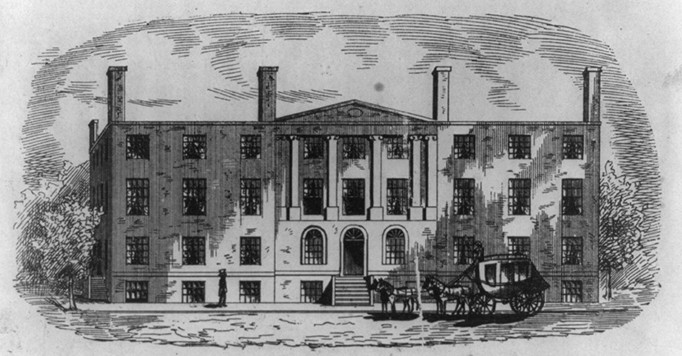
In December 1836, a catastrophic fire at the United States Patent Office destroyed records of American innovation kept since the earliest days of the Republic. We call patents from this era (1790-1836) “X-patents” not because they’re shrouded in mystery (although they are) but because they predate the numbering system now in use.
The so-called X-patents had been registered according to the name of the inventor and the date of issue. Only after the 1836 fire, as the Patent Office was reconstructing its collection, did examiners begin numbering the early grants retroactively. To distinguish them from contemporary patents, numbered from one (issued in July 1836) to 11 million (issued in May 2021) and counting, the letter X was affixed. Eli Whitney’s patent for the cotton gin, for example, issued in 1794, became 72X, as distinct from U.S. Patent No. 72, issued in October 1836 to Silas Lamson for an improvement in the construction of scythes. We now refer to all patents from before U.S. Patent No. 1 (issued July 13, 1836) as X-patents.
The fire of 1836 destroyed the specifications and scale models for nearly 10,000 X-patents. The only remaining records were kept by the inventors themselves, in the form of "letters patent,” handwritten precursors to today’s typed and digitized patent grants.
Standing amid the ashes, Commissioner of Patents Henry L. Ellsworth faced an impossible situation. With the transition to a rigorous examination system, enacted just five months prior to the fire, the Patent Office now relied on the records of past inventions to determine the patentability of future inventions. To keep functioning—to survive—the Patent Office needed those records, and fast.
The solution became the Patent Office’s first attempt at crowdsourcing its own history. Within a few months, Congress and Commissioner Ellsworth put out a call to patentees for information about their inventions, and based on the mailed-in responses, some 2,800 patents could be reconstructed. But the rest—more than 7,000—were never recovered.
Chronically overtasked, patent examiners of the later 19th century had little time to look for the Patent Office’s missing documents. In the 20th century, the devastating fire of 1836 and the lost records became a dim, distant memory to all but a few patent history enthusiasts. These volunteers—archivists, librarians, historians, patent examiners, and interested members of the public—have found hundreds of X-patents, and the USPTO has been adding the scans to its Patent Full-Text and Image Database (PatFT) for several years. The work continues to this day, with X-patents now available on the USPTO’s Patent Public Search site, too.
Surviving X-patents are scattered far and wide. Some are at grand repositories like the National Archives and the Smithsonian Institution. Others are at state and local archives, buried amid the papers of inventors, their businesses, or their families. Some X-patents have even turned up in people’s attics and at public auctions. If you happen upon one that isn’t already in the USPTO’s Patent Public Search, please notify the USPTO Historian (historian@uspto.gov), and we’ll add it to the database.
The more X-patents we have digitized, the less vulnerable our history will be to fires like the one in 1836. Equally important, of course, is the accessibility that our databases provide. With an ever-expanding collection of X-patents available online to all visitors to USPTO.gov, we’ll be giving researchers and history buffs all over the world first-hand accounts of what was state of the art in the earliest days of U.S. history and how early Americans first used patents as tools of intellectual property protection.
Posted at 04:22AM Jul 13, 2022 in USPTO | Comments[7]
The Biden Administration is acting to promote competition and lower drug prices for all Americans
Joint blog by Kathi Vidal, Under Secretary of Commerce for Intellectual Property and Director of the USPTO, and Robert M. Califf, FDA Commissioner
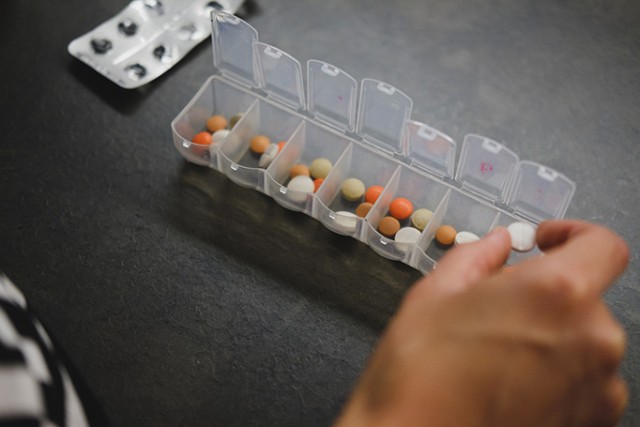
President Biden is helping Americans protect and preserve their health and live with the dignity of knowing that they can care for themselves and their loved ones, in part by making the cost of prescription drugs more reasonable. The President has outlined a multipoint plan to increase access and reduce the cost of prescription drugs in his July 2021 Executive Order on Promoting Competition in the American Economy. Included in that plan was a call for the United States Patent and Trademark Office (USPTO) and the Food and Drug Administration (FDA) to leverage our collective expertise in promoting innovation, competition, and the approval and regulation of safe and effective drugs to help provide relief to American families at the pharmacy.
The Biden Administration, including the USPTO and the FDA, recognizes the important contributions and lifesaving treatments developed by the pharmaceutical industry, a primary force in the discovery and development of drugs and vaccines that have fully or nearly eradicated deadly diseases like smallpox, polio, measles, diphtheria, hepatitis B, and meningitis, and highly effective treatments for various cancers and other chronic diseases.
That work, and the billions of dollars spent on bench research and clinical trials, is made possible in part through our patent laws. The foundations of these laws were written into the U.S. Constitution by our nation’s founders, and pharmaceutical companies can utilize patents granted for a limited time to recoup and benefit from their investments.
Our laws also allow for and encourage generic drug manufacturers to enter the market to increase competition and drive down prices. This delicate balance rewards and incentivizes those who do the work to create original lifesaving drugs, as well as those who later enter the market to source and provide access to more affordable alternatives. These laws contribute to the fact that thirteen of the top twenty most innovative and inventive pharmaceutical companies of 2021 are headquartered in the United States. The U.S. pharmaceutical industry offers enormous benefits to Americans when more medicines and treatment options are available to treat a wide range of diseases.
But more must be done. As President Biden noted in the Executive Order almost exactly a year ago, while the issuance of robust and reliable patents to incentivize pharmaceutical innovations is critical, our patent system must not be used to unjustifiably delay generic drugs and biosimilar competition beyond that reasonably contemplated by law.
To further the objectives of this Executive Order, the USPTO and the FDA recently completed an exchange of letters outlining numerous initiatives to execute on the President’s agenda. These initiatives will strengthen our relationship and expand the resources available for assessing patentability and addressing instances of patents being used improperly to delay competition.
Through these initiatives, the USPTO will protect against the patenting of incremental, obvious changes to existing drugs that do not qualify for patents. This effort can lead to lower drug prices because drug companies will not be able to unjustifiably delay generic competition based on trivial changes to a drug product.
The USPTO will work to ensure that patent examiners have the time and resources they need to conduct a thorough review of patent applications for pharmaceutical inventions. The FDA will assist the USPTO in providing patent examiners with training on the state of the art in the pharmaceutical and biologics fields, and the USPTO will provide new tools for patent examiners to search enormous and growing global databases of technical information—including publicly available sources maintained by the FDA—to determine whether similar innovations already exist.
The USPTO and the FDA will further collaborate to develop policies aimed at protecting and promoting U.S. innovation while advancing competition that can lower drug prices for all Americans. We invite the public to participate in this process through upcoming outreach events and listening sessions.
Our intent is to ensure our government’s innovation system strikes the appropriate balance, encouraging meaningful innovation in drug development while not unduly delaying competition that provides relief from the high cost of medicines.
For more information on the Biden Administration’s initiative to lower drug prices, please go to the White House website. For information on the FDA and USPTO planned initiatives please visit the USPTO website.
Posted at 05:43AM Jul 06, 2022 in USPTO | Comments[3]

